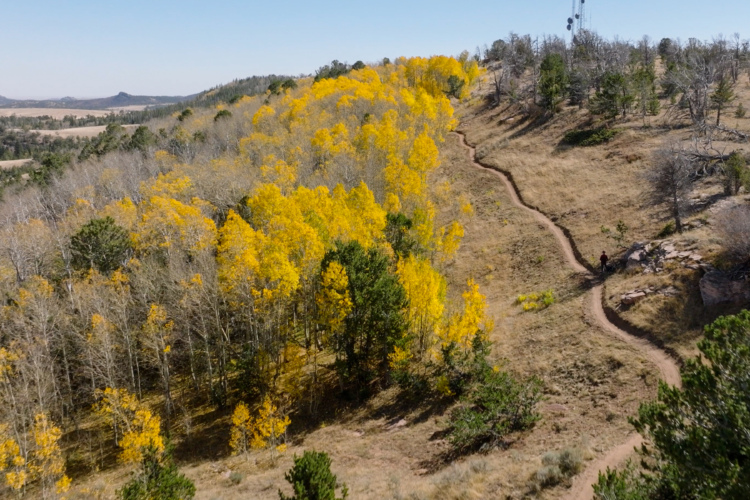
The clutch mechanism on all Shimano derailleurs needs to be cleaned and greased occasionally. There are a couple moving parts inside the clutch that require consistent grease to function properly, and as we wash our bikes or ride through water that grease slowly migrates from its intended position. Below is an outline of how to determine if your clutch needs service, and how to execute the operation.
This is a task for folks with a bit of patience and a love for home repair, as the parts you will have to handle are small and precise. I recommend doing all of this work in a well-lit area where you can find any parts that fall to the floor. Also, be sure to make note of exactly how things come apart so that you can replace them as they were.
In full disclosure, I find the juxtaposition of complexity and simplicity in rear derailleurs fascinating, and I enjoy taking them apart.
What does the clutch do?
The derailleur’s cage consists of the carbon or alloy plates that hold two pulleys in line and it is the part of the derailleur that your chain passes through. Derailleurs have a spring that holds the cage back to keep tension on the chain. The clutch on Shimano derailleurs adds tension to the chain, reducing chain bounce in rough terrain, therefore minimizing “chain slap” against the frame, and keeping as much chain wrapped snuggly around the chainring as possible to prevent it from dropping off the ring. Clutch designs grew in popularity around the same time as 1X drivetrains because folks wanted a better way to prevent their chain from ejecting.
Does my derailleur clutch need to be serviced?
The clearest sign that your clutch needs a “clean and grease” is when the cage stops returning. You can check this by pulling the cage forward toward the chainring and letting go. If the cage returns to its natural position slowly or doesn’t return whatsoever, it needs to be serviced.
Another way you might notice a grumpy clutch is if you are shifting from lower gears to higher ones (larger to smaller cogs on the cassette), and the chain hangs slack rather than being pulled tight by the derailleur cage spring. This is an indication that your clutch is corroded or under-lubed, and needs to be serviced. This was the case with the derailleur I used throughout the following tutorial.
Alternatively, if you pull the cage forward with the clutch switched to the on position, and then do the same in the off position, and the tension feels the same in either position, the clutch likely needs attention.

Lastly, if the bit of rubber that covers the clutch adjustment screw is missing you might want to service it and plug the hole, regardless of how well the clutch is working. The hole may seem small but it doesn’t take much water and dirt to contaminate the small bushings inside.
Clean it, grease it, shift it

Once you have determined that your clutch needs some love, remove the derailleur from the bike and find a well-lit spot to work where you will be able to find small parts if they fall out. I like to work with things like this while sitting on a high-pile carpet so that any ejected bits stop where they land rather than bouncing underneath a workbench.
Step 1 Take your freshly-cleaned derailleur in hand and remove the three screws that hold the clutch cover in place. Then set the cover aside and take a photo of the clutch internals to help your future-self recall how the puzzle goes back together.

Step 2 Below is a blisteringly bright shot of the clutch internals before anything is removed. Take a long look at how it all goes together so you can replace the pieces properly. Maybe take another photo of the clutch for posterity.

Step 3 There is a rubber seal where the clutch cover seats against the main clutch body. Remove the rubber seal, clean it, and set it aside.

Step 4 Remove the clutch tension adjust screw so that you can pull the clutch off of the main derailleur body.

Step 5 Pull the clutch assembly off the derailleur body. There are no sub-steps to this piece because it all comes off and goes back on as a connected unit. You may need to wedge a sharp flathead screwdriver or pokey-tool under the clutch mechanism to break it loose. If the clutch is severely corroded you might need to spray it with some WD40 or other thin oil to help break things loose.

Step 6 Clean every piece of the clutch internals with alcohol or a mild degreaser. Corroded bits might require some light sanding to get them back in fully functioning order. If there is too much corrosion, or parts are broken, you can find replacement clutch components at your local Shimano dealer.


Step 7 The large cylindrical post that held the clutch in place is also the main bolt that holds your derailleur cage in place. You can remove the cage by loosening this bolt, but that is a topic for another tutorial entirely. Swab some grease on the post, and slide the cleaned cylindrical clutch piece back over it. Remember to install the clutch with the “toothy” looking side facing up. Shimano recommends using grease designed for internally geared hubs. I typically use a “ringdrive” grease designed for lubing pawls and hub shell internals.

Step 8 With the clutch cylinder installed, grease all of the outer edge of the cylinder. This is the surface that receives the most pressure in the system, so make sure to cover all of it thoroughly.

Step 9 Now the slightly tricky bit. The other pieces of the clutch have to be properly aligned and replaced in one shot. Both arms of the clutch tension band slide into the cam unit, and that also slides over the rectangular clutch actuator. If you move the clutch lever around with these pieces removed you will see the actuator post move along with it. The tension band has to go over the clutch cylinder at the same time the rectangular hole in the cam unit slides over the rectangular actuator.

Not only do both of those things have to slide together simultaneously, but you need to make sure that the piece that slides over the actuator is in the proper position to tighten the band when the clutch is switched in the on position.
The cam unit has a thick side and a thin side. When the clutch is on, the thick side is pushing against the tension band, adding tension to the system. When it is switched off the thin side of that same piece allows the tension band to relax, and the derailleur cage has less tension throughout its plane of motion.




Step 10 Replace the clutch tension screw and, with the clutch turned off, tighten it until you feel a little resistance. It should not require much more tension than that. If you tighten the screw too far the derailleur cage will not move, and you can simply back the screw off until the cage moves freely.
With all of the clutch bits reinstalled, move the cage back and forth to make sure it is working properly, both with the clutch on and off. You should feel a significant difference in the effort it takes to move the cage with the clutch on than with it off. If you don’t feel that difference, you will need to pull the cam unit and tension band back off to swap the position of the small cam piece that slides over the actuator.
Step 11 Now that you have everything back where it belongs you can put the rubber gasket back in its groove, and screw the cover down tight again.

If you have trouble reinstalling the derailleur, here is a video with some helpful tips.
Enjoy your properly functioning and now slightly quieter drivetrain.









22 Comments
Jul 19, 2019
Now I’ll be able to get this done when I do my shift cable and housing replacement next week!
Jul 3, 2020
“If there is a noticeable change in friction in the chain stabilizer assembly, or if it starts to make noise, you may need to add grease to the chain stabilizer.”
https://si.shimano.com/pdfs/dm/DM-MARD001-03-ENG.pdf#page=26
"It sounds like the derailleur can be fixed with a short home service rather than a replacement. Of course, though, any bike shop will be able to help with a service as well."
Sep 29, 2020
Aug 14, 2020
Aug 14, 2020
Aug 14, 2020
Jan 24, 2020
Jan 24, 2020
Apr 24, 2021
May 4, 2020
May 5, 2020
Oct 23, 2020
I'm confused about whether to grease or not. And why such a specific grease? Surely something more generic would do.
Oct 23, 2020
Dec 17, 2020
Dec 17, 2020
Dec 17, 2020
Best regards
Dec 18, 2020
Jul 1, 2020
Jul 3, 2020
“If there is a noticeable change in friction in the chain stabilizer assembly, or if it starts to make noise, you may need to add grease to the chain stabilizer.”
https://si.shimano.com/pdfs/dm/DM-MARD001-03-ENG.pdf#page=26
"It sounds like the derailleur can be fixed with a short home service rather than a replacement. Of course, though, any bike shop will be able to help with a service as well."
Jul 2, 2020
Generally, I have only ever serviced the XTR clutch 1x per year, and they work flawlessly. I also only wash my bike by hand, which definitely saves some issues.
This sounds like a warranty issue that you might want to take to a different bike shop if possible. There's no limit on how many times they can warranty faulty product, so they should just have it swapped for you.
Jul 23, 2019
Aug 17, 2020
"Sounds like it’s seized with dirt. Bit difficult to say without seeing it.
I wonder if he’s checked the Exploded view, User manual or Dealer manuals here: https://si.shimano.com/#/en/search/Keyword?name=RD-M8100&name_web=
If not, sounds like it’s a trip to the nearest Shimano dealer for advice."